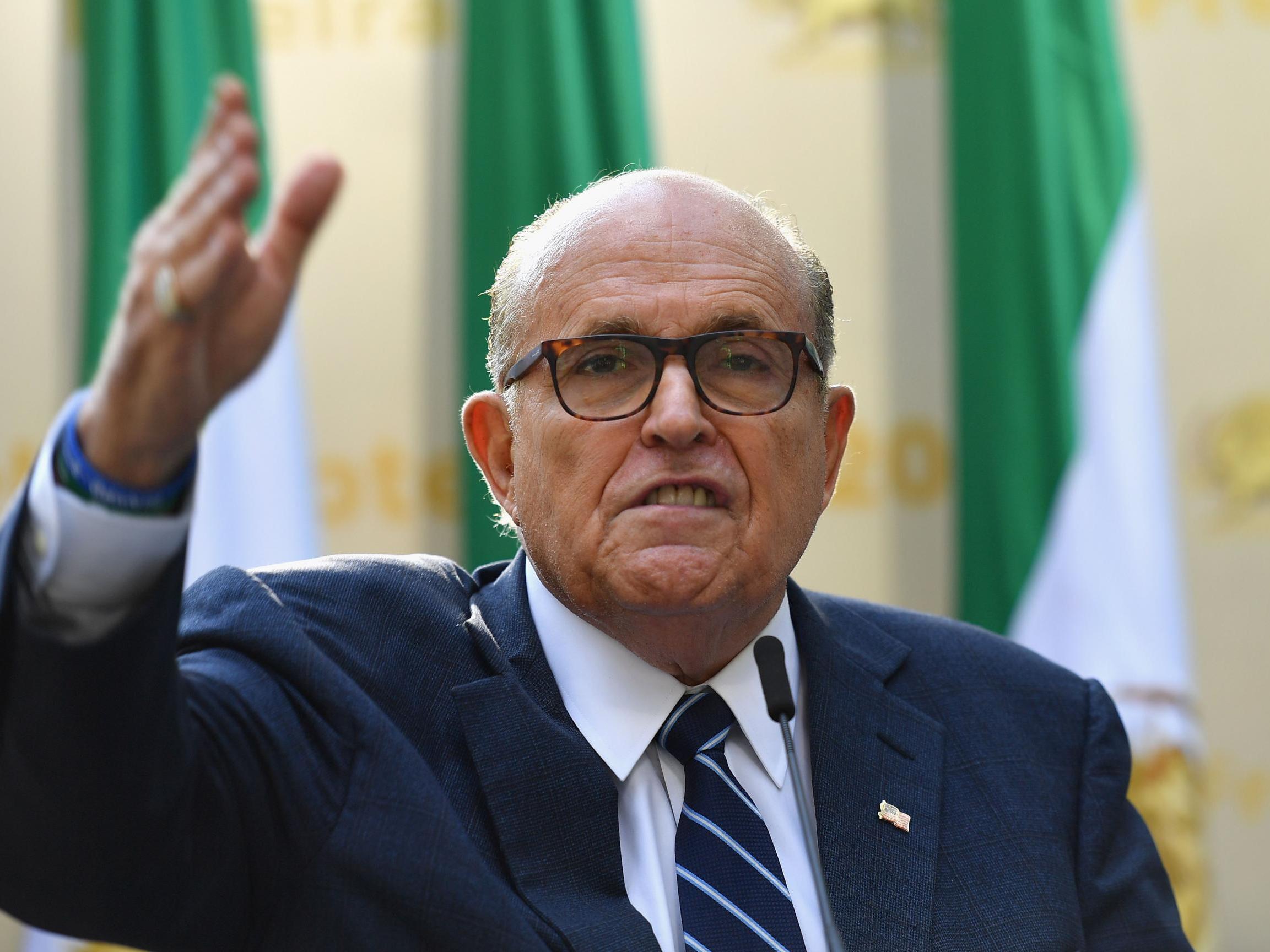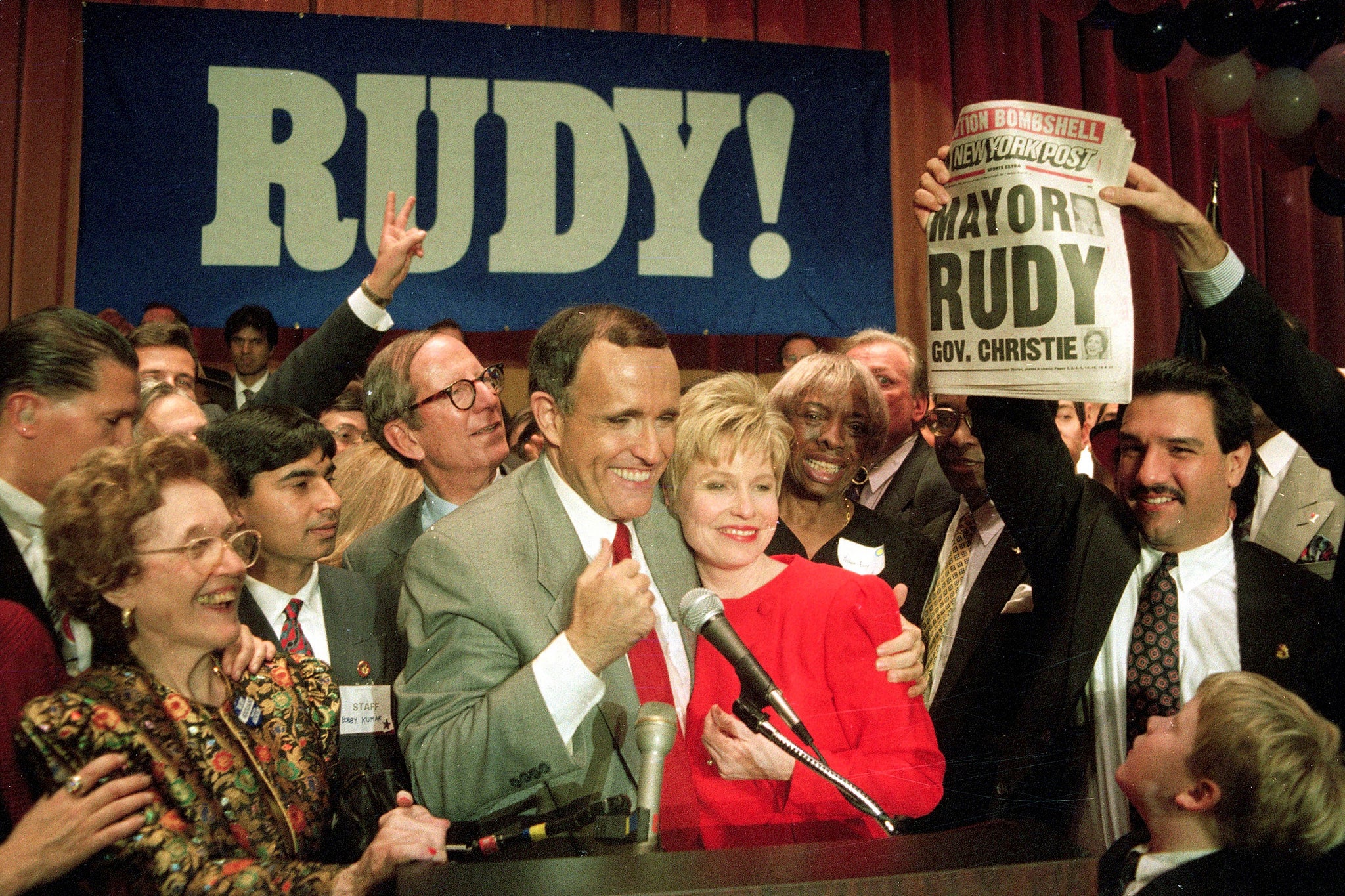Rudy Giuliani hasn't changed, he's always been crooked
There is no need to lament the loss of ‘old’ Rudy, he never went away, argues Pedro Regalado

Your support helps us to tell the story
From reproductive rights to climate change to Big Tech, The Independent is on the ground when the story is developing. Whether it's investigating the financials of Elon Musk's pro-Trump PAC or producing our latest documentary, 'The A Word', which shines a light on the American women fighting for reproductive rights, we know how important it is to parse out the facts from the messaging.
At such a critical moment in US history, we need reporters on the ground. Your donation allows us to keep sending journalists to speak to both sides of the story.
The Independent is trusted by Americans across the entire political spectrum. And unlike many other quality news outlets, we choose not to lock Americans out of our reporting and analysis with paywalls. We believe quality journalism should be available to everyone, paid for by those who can afford it.
Your support makes all the difference.In a recent op-ed, Ken Frydman, Rudy Giuliani's press secretary during his 1993 mayoral campaign, lamented the loss of the “old” Rudy. “What happened to 'America's mayor'?” he asked, a refrain that has become all-too-familiar as Mr Giuliani spirals in the throes of the Ukraine scandal.
But Mr Giuliani's latest antics should be no surprise. In fact, his political career reflects a leadership style and specific priorities that shed light on his current role at the centre of the Trump impeachment. Like Trump himself, Giuliani has long used race-baiting and the media to power his own political rise, at the expense of communities of colour.
Driven by political ambition and an instinct for theatrics, as US attorney for the Southern District of New York in 1986, he travelled to Washington Heights in Upper Manhattan with undercover news cameras as part of a Drug Enforcement Agency (DEA) operation to show the American public how easy it was to buy crack in the neighbourhood. Mr Giuliani's trip to Washington Heights fell in line with the attorney's camera-friendly persona that later made him one of the most famous law enforcement officials in the country. In the process, the stunt reinforced a harmful stereotype about the neighbourhood's latest denizens, Dominican immigrants, as especially prone to criminality.
Mr Giuliani was pictured on the front page of The New York Times disguised in sunglasses and a Hells Angels leather vest. The positive press he received would help him make the case to voters that he would be tough on crime and “clean up the city's image,” trampling upon the dignity and civil liberties of the black and Latino residents of the city in the process.
In 1989, he just barely lost the mayoral election to David Dinkins, the city's first and only African American mayor. But when a 23-year-old Dominican man, Jose “Kiko” Garcia, was shot and killed by a white police officer in Washington Heights in 1992, Mr Giuliani seized on the tragedy as a political opportunity to resurrect his mayoral ambitions.
The shooting sparked resistance and a demand for political action from within the Dominican community. While news outlets focused on the fires and property damage that lasted nearly a week, Dominicans from different walks of life marched in the neighbourhood's streets calling for the criminal conviction of the New York Police Department officer who shot Mr Garcia, among other essential neighbourhood needs. Community members communicated that they felt unjustly characterised as criminals by a mostly white police precinct that consistently harassed them. The department also had been under federal investigation for corruption relating to drug sales less than a month before Mr Garcia's death.
Mr Giuliani saw the politics of the situation differently. Eyeing a chance to unseat Mr Dinkins, Mr Giuliani threw his support behind the NYPD. He argued vocally that police officers were not to blame for the unrest in the city, but the mayor was.
Later that fall, he stood up on a podium near City Hall in front of thousands of off-duty police officers and declared, “The reason the morale of the police department of the city of New York is so low is one reason and one reason alone: David Dinkins.” Tapping into the sense of police grievance, Mr Giuliani criticised Mr Dinkins for utilising city funds to fly Mr Garcia's body - which he framed as being that of an undeserving “criminal” - back to the Dominican Republic for burial. Mr Giuliani shared the stage with the officer who shot and killed Mr Garcia. The rally quickly turned aggressive as hundreds of officers swarmed past barricades, stood atop cars, and blocked traffic on the Brooklyn Bridge. The nearly three-hour rally was underscored by repeated chants: “Rudy! Rudy!”
Mr Giuliani's political tactics had deep consequences for New York City. In the immediate aftermath of the unrest in Washington Heights, as well as unrest in the Crown Heights neighbourhood of Brooklyn, his mayoral campaign rhetoric reinforced the idea among many city residents that Dominicans and other immigrants of colour did not belong. The early 1990s witnessed historically high crime, and New York was no exception. Mr Giuliani's “tough on crime” stance and white grievance politics had broad appeal in the city - among white voters.

Mr Giuliani rode the wave of white support to win the city's mayoral office in 1993. He lost Manhattan, the Bronx and Brooklyn, but he swept the white, more conservative strongholds of Queens and Staten Island. The latter was composed of roughly 80 percent white residents, and Mr Giuliani secured 84 percent of the vote. Half of his margin of victory was attributable to Staten Island's increased voter turnout.
As mayor, Mr Giuliani sought to “clean up” the city and instituted the Broken Windows theory of policing, the unproven notion that small infractions breed larger crimes. By cracking down on minor infractions, his approach encouraged aggressive policing, particularly in communities of colour. Together with CompStat, a statistical program introduced in 1994 designed to reduce crime, these tools guided his administration's approach to violence. In turn, they made police officers more accountable to statistical objectives fuelled by political agendas than to the everyday people whom they were intended to serve.
Embracing Broken Windows policing had many consequences, from increased surveillance and incarceration to tragic violence. In 1999, police officers shot and killed an unarmed black immigrant named Amadou Diallo in the Bronx. While the officers were acquitted, the horrific event turned attention to the racially biased stop-and-frisk policy that had provided the context for Mr Diallo's murder.
Mr Giuliani was unrepentant, expressing sympathy for the acquitted officers as much as for Mr Diallo's family, and he called the weeks of protests and outcries against the NYPD “silly.” Building on his 1986 tactic of using television cameras to dehumanise and vilify an immigrant community, his policing policies and response to the Mr Diallo murder as mayor framed immigrants as less than full members of the community.
Mr Giuliani's harsh policies hampered his political reputation in New York, but they survived beyond his administration. In 2011, NYPD officers made 686,000 stops - a practice undergirded by Broken Windows theory - that disproportionately affected black and Latino New Yorkers. Yet, between 2004 and 2012, no actual law enforcement action was taken in 88 per cent of stop-and-frisk cases in New York City. A judge ultimately deemed the practice unconstitutional in 2013, saying that it amounted to racial discrimination.
Despite his fraught time heading New York, Mr Giuliani benefited both from significant declines in violent crime between the early 1990s and early 2000s more broadly (which has its explanations elsewhere) and from his much praised leadership in the wake of the tragic violence of September 11, 2001, which occurred just months before the end of his term. With his post-9/11 reputation cemented as “America's mayor,” the recent memory of the devastating toll his “tough on crime” policies had on the city was muted.
But the fact remains that today's Rudy is, indeed, the Rudy of old. To be sure, Rudy once used the law to fight criminal conspiracies, and today he appears to be connected to one. But the old playbook - vilifying communities of colour, engaging in the politics of white grievance and using the media to play the part of being tough on crime - fits in perfectly with the aims and rhetoric of the Trump administration. His legacy is not being tarnished by the day-to-day happenings on Capitol Hill. Instead, his current predicament should remind us of a past when he mastered turning public racist sentiment into political opportunity.
The Washington Post
Join our commenting forum
Join thought-provoking conversations, follow other Independent readers and see their replies
Comments